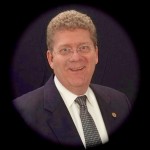 In an effort to better understand the “context” of the environment in our hospitals, we conducted some basic research. Our results, though mostly unscientific, do bring us to our current state in healthcare. We considered the different influences on how we practice medicine, how we run our hospitals (including most importantly, how our hospitals get paid) and the influences of technology and innovation. Here is a brief synopsis of what we found.
In an effort to better understand the “context” of the environment in our hospitals, we conducted some basic research. Our results, though mostly unscientific, do bring us to our current state in healthcare. We considered the different influences on how we practice medicine, how we run our hospitals (including most importantly, how our hospitals get paid) and the influences of technology and innovation. Here is a brief synopsis of what we found.
We work in accredited hospitals and healthcare organizations that strive for improving patient safety and delivering great care through highly reliable processes. It all began with our accreditation.
Widespread hospital accreditation began in the US in 1946 with the Hill-Burton Act. In 1965, with the enactment of Medicare and Medicaid, Congress determined that the quality of care provided by individual hospitals would be based on uniform federal standards, thus the formalization of accreditation bodies conducting surveys to “ensure” the quality of care. The outcome of these uniform federal standards was to comply with these standards and put forth enough effort to “pass” the survey (typically every 3 years).
Fast forward fifty years and we still struggle with that quality of care, even though we are accredited! To respond to this struggle, we invoke new tools to assist, such as Lean, Six Sigma, Baldrige, PDSA, etc. and we will struggle. Healthcare has become exponentially more complex and we keep adding more complexity to a foundation that is grossly under-managed, our basic accreditation.
The DNV-GL accreditation model gives a foundational solution, the process and risk-based international standard, ISO 9001. This standard in simplest terms requires that you manage your organization as a series of interrelating processes and that you manage the risk appropriately in those processes. That’s the secret. As a profession, we do not effectively manage our processes for sustainability, sometimes even the riskiest processes.
Avedis Donabedian, a physician and health services researcher at the University of Michigan, developed the Donabedian model in 1966 for evaluating quality in healthcare. His model is composed of three categories, structure, process and outcomes. Process management is the basis for ISO 9001, yet it is the most misunderstood and maligned in our complex environment…ask those working in Lean and Six Sigma about sustainability. Another means to measure this point is to look at the series of recurring issues in healthcare. We typically manage issues by revising a policy and then “training” on the newly revised policy. Lo and behold, 3-5 years later, the issue recurs when the heroes retire or focus moves to another issue. We don’t create sustainable processes that provide consistent outcomes by the design of the process. Currently, when process changes typically occur, these changes are mostly people dependent, thus allowing for much more variability.
From my perspective, it’s that simple. That’s the sandbox that we all play in today. Now that we have a better understanding of the context of your hospitals, we can fully understand the intent of these chapters in ISO 9001:2015. Our Vision can be realized in a more efficient fashion. No more “recalculating, based on traffic” because our detours and side trips are eliminated or reduced. We fix an issue from a process perspective and it should not recur. Now we can anticipate our GPS stating, “You will reach your destination in 10 minutes”!
Bio:
Ted is a Pharmacist, a Certified Enterprise Risk Manager (CERM©), and a Senior Advisor with BlueSynergy Associates. BlueSynergy Associates maximize innovation, experience and customer perspective to reduce risk and make hospitals a safer environment. He advises and instructs hospitals in quality, risk and environmental management systems. Ted led the largest ISO 9001 implementation in healthcare at the Veterans Administration. He is a Senior Member of ASQ and a certified Lead Auditor in quality management systems by Exemplar Global. He can be reached by email at tschmidt@bluesynergyassociates.com or by calling toll free at 844-424-7825.